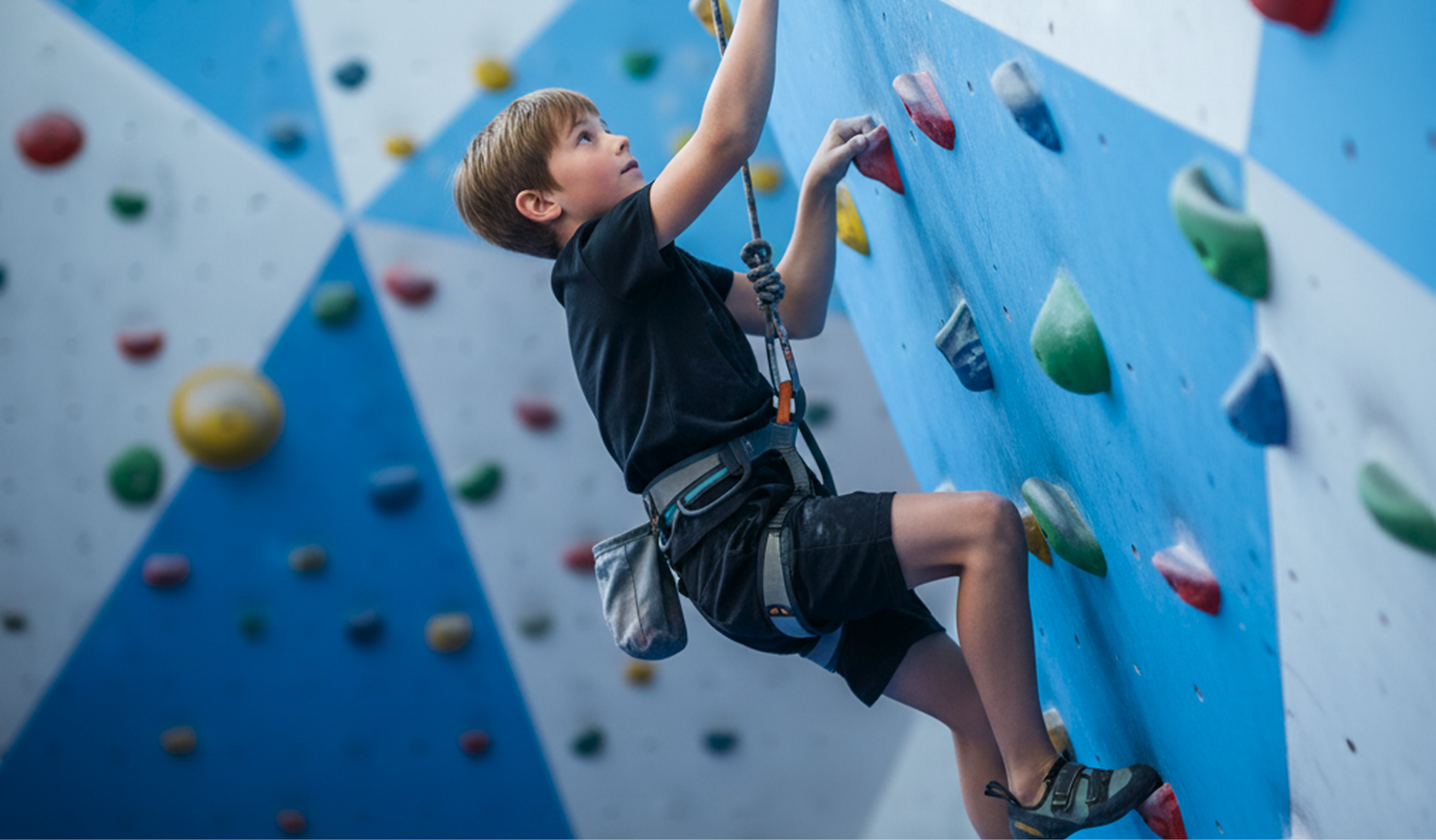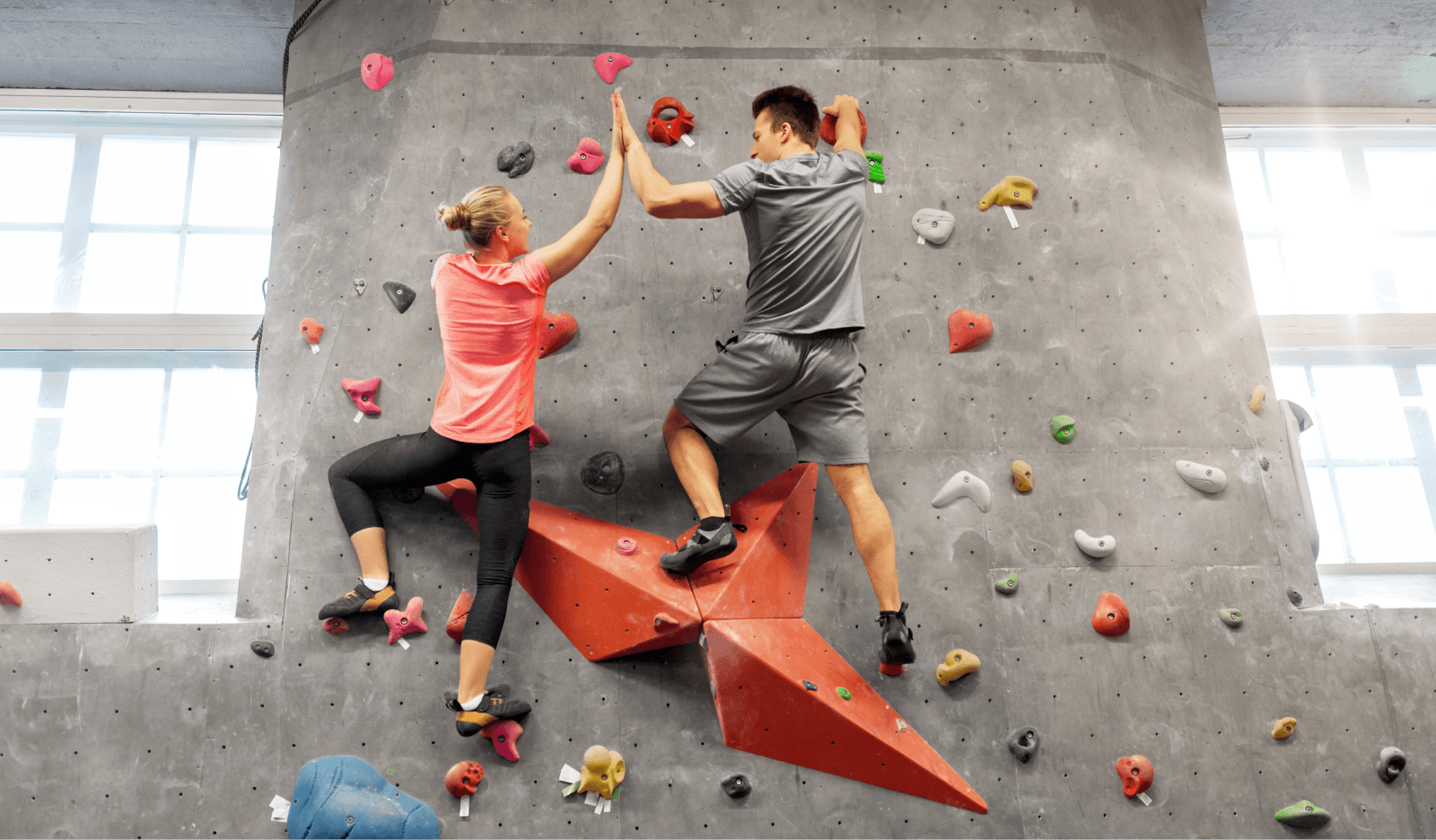Cost Guide: How to Choose Your Next Climbing Venue Attraction

Are you looking to take your climbing venue to new heights? Adding a new attraction might just be the ticket. With so many potential attractions to choose from, selecting the best one can be challenging. Ideally, you'll want to balance budget with impact.
We’ve compiled a list of the various attractions you can add to your climbing venue, evaluating them based on cost and potential return on investment (ROI). Plus, we’ve thrown in some case studies to inspire your next crowd-pleaser.
Why build new climbing venue attractions?
Introducing a new attraction to your climbing venue isn't merely about expanding your amenities; it’s about crafting unique experiences that distinguish your facility in the market. A cutting-edge climbing attraction revitalizes your venue, attracting enthusiasts and newcomers alike, eager to engage with fresh challenges. The right attraction can dramatically increase foot traffic, enhance customer engagement, and deliver a strong return on investment.
By consistently updating and diversifying your climbing offerings, you demonstrate to your community a steadfast dedication to delivering exceptional and thrilling climbing experiences. This commitment solidifies your venue as a premier destination for climbers and adventure-seekers, fostering a loyal customer base driven by the pursuit of adventure.
Climbing venue attraction ideas
Bouldering walls
Expense: High
ROI potential: High
Bouldering offers guests a thrilling experience without the need for harnesses, making it more accessible to beginners. However, it’s not without its challenges. You can design a bouldering wall to mimic caves, featuring wrap-around surfaces and horizontal sections that require significant physical prowess to master. Bouldering walls are generally kept close to the ground, with a maximum height of approximately 15 feet.
The cost of constructing bouldering walls can be steep, as it requires specialized designs and materials to mimic natural rock formations and ensure safety. However, bouldering’s appeal to a wide audience can lead to significant returns through entrance fees and increased memberships. But remember, bouldering still comes with risks, so ensure you’re covered with waivers.
Case study: Cave Rock Climbing in Canada is a bouldering-only indoor gym. Its walls are intricately designed, and the way the brand has dedicated itself to bouldering as a discipline is impressive. From private lessons to group and advanced sessions, Cave Rock Climbing offers it all.
Auto-belay areas
Expense: Medium
ROI potential: Medium-high
Auto-belay systems allow climbers to enjoy the heights without needing a partner, making it an excellent addition for those looking to climb at their own pace. The cost includes the wall construction and the auto-belay devices themselves, which can be quite an investment. And remember, as with any automated system, there will be costs associated with maintaining the equipment.
However, auto-belay systems are a great way to attract solo climbers and can significantly increase individual session times and repeat visits. You can also look to add obstacle areas that use the system, with jumping and zip lines attached to a climbing wall for extra thrills.
Case study: SkyZone's auto belay systems offer climbers a new world of independence. Guests can climb, jump, and fly across a challenging course while securely harnessed from above. By offering this kind of attraction, SkyZone is able to tap into new markets and entice a broad audience to visit its venues.
Virtual Reality (VR)
Expense: Medium-high
ROI potential: High
VR climbing merges the physical exertion of climbing with the boundless possibilities of virtual environments. Climbers can traverse exotic landscapes or play interactive games while physically climbing a wall. This novel concept can attract tech enthusiasts and gamers alongside traditional climbing aficionados.
The good news is that there are companies offering solutions in this space, and you might be surprised by how compact they are (more on this below). The real beauty of adding a VR area is that it will give you an additional attraction that can be added to your party packages and passes as an upsell which complements the services you already offer.
Read more: How to Increase Party Bookings with ROLLER Analytics
Case study: Valo Climb is an immersive VR experience that combines motion tracking and projected graphics to turn an ordinary physical climbing wall into an augmented climbing game. This system projects interactive games and training programs onto the wall, combining physical climbing with digital elements to create engaging and dynamic experiences. As a plug-and-play solution, it could be worth exploring as an attraction to add to your climbing venue.
Themed walls
Expense: Medium-high
ROI potential: High
Themed climbing walls transform the climbing experience by immersing climbers in vividly crafted environments or narratives. From enchanted forests and outer space to superhero cities, these walls do more than offer a physical challenge—they spark the imagination, making climbing an engaging adventure for all ages.
The cost of any wall will be on the high side, but the appeal of a fully themed area will be irresistible to parents booking parties and kids wanting to return for another shot at climbing a beanstalk.
Case study: Rockstar Climbing is one of the UK’s leading indoor climbing centers. It offers a range of climbing facilities, including beautifully realized themed areas. Its dedication to providing multiple themed climbing walls ensures it can cater to kids and adults looking for a whimsical day out.
Read this next: How Rockstar Climbing Increases Online Sales By Over 25%
Zip lines
Expense: Medium
ROI potential: Medium-high
You could elevate your climbing venue's appeal with a compact zip-line attraction. This kind of addition is perfect for injecting excitement into both indoor and outdoor spaces. Unlike their larger counterparts, these mini zip lines require less space, yet they deliver an exhilarating rush that captivates thrill-seekers of all ages.
The investment required for installing a reliable zip line is high, yet it's a strategic enhancement that differentiates your climbing venue in a competitive market. This attraction not only draws adventure enthusiasts but also offers quick turnover rates for participants, making it an excellent source for upsells.
Case study: Sky Zone offers zip lines at certain locations, adapting what is typically an outdoor extreme sport into a safe, indoor environment suitable for children. The success of zip lines in such a prominent brand highlights their potential to attract visitors and generate interest.
Ready to build your next climbing venue attraction?
When planning your next climbing venue attraction, consider your target audience, available space, and budget. The key to a successful investment lies not only in its initial appeal but also in the long-term engagement it provides to your climbers. By offering a variety of attractions that cater to different skills, interests, and age groups, you create a dynamic and inclusive environment that keeps climbers returning for more.
Whether you're transforming a corner into a bouldering cave or lighting up the room with a VR climbing wall, there's no limit to the creative ways you can enhance your venue. So, take a cue from these case studies, think outside the box, and start planning your next big adventure. After all, the peak might be high, but the view (and the ROI) from the top is always worth it.
Discover how ROLLER's rock climbing software can transform your climbing venue's profitability and visitor experience.
Related articles


How to Start a Rock Climbing Business: Costs, Equipment, and Steps to Success

Your Ultimate Guide to Growing An Indoor Rock Climbing Gym Business
Enhance your guest experience
Get free education, tips and inspiration to help you run a successful venue.